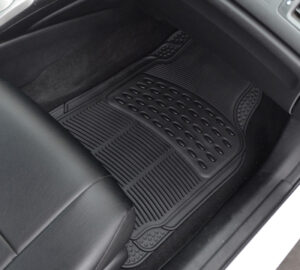Automotive Mats market forecast at $51.7 billion by 2033
Rockville, MD – Expanding at a steady CAGR of 4.4% from 2023 to 2033, the global Automotive Mats Market is forecasted to reach a valuation of US$ 51.7 billion by 2033-end. This study by Fact.MR, a market research and competitive intelligence provider, suggests that more companies will make a move to manufacture automotive mats with sustainable materials in the future.
Asian economies of Japan, China, India, and South Korea are set to offer highly attractive business opportunities for automotive mat suppliers in the future owing to the presence of key automotive companies and expanding automotive manufacturing activity. Rising disposable income and increasing consumer awareness regarding vehicle interior aesthetics are also projected to uplift sales of automotive mats in the aforementioned countries in the APAC region through 2033.
On the contrary, high maintenance costs associated with the use of automotive mats are predicted to impede the global automotive mat demand outlook in the long run. The use of rubber and plastic materials to manufacture automotive mats is also estimated to create hurdles for automotive mat companies as the focus on sustainability around the world increases.
Key Takeaways from Market Study: The global automotive mats market stands at a valuation of US$ 33.5 billion in 2023.
Demand for automotive mats is projected to expand at a CAGR of 4.4% from 2023 to 2033.
The global market is forecasted to reach US$ 51.7 billion by 2033-end.
Increasing automotive production, rising disposable income of people, growing urbanization, launch of new vehicles, and high consumer awareness regarding vehicle interior aesthetics and hygiene are key market drivers.
Uncertainty in the global automotive supply chain is slated to pose a significant challenge for automotive mat suppliers in the future.
Emerging countries such as India, China, and South Korea in the APAC region are anticipated to be highly rewarding markets for automotive mat companies.
Rubber automotive mat sales currently account for more than 40% of the global market revenue share.
“Rising sales of luxury vehicles and growing popularity of customization will provide lucrative opportunities for aftermarket automotive mat suppliers,” says a Fact.MR analyst
Rubber mats have a long history in the automotive industry and continue to maintain a significant presence today. The versatility and reusability of rubber enable the creation of car mats in various sizes and shapes, contributing to its substantial market share on a global scale.
Currently, rubber-based automotive mats account for over 40% of the revenue share in the global automotive mats market. However, concerns regarding the environmental impact of rubber disposal and the high carbon footprint associated with rubber production are prompting automotive mat manufacturers to explore alternative materials with a lower carbon footprint, aligning with the increasing emphasis on sustainability.

